Update (summer 2021): since writing this post in July of 2017, this research has grown to become a book! So Much to Be Angry About: Appalachian Movement Press and Radical DIY Publishing, 1969–1979 was release in March 2021 on West Virginia University Press, and you can get a copy from the Justseeds shop!
A couple weeks back I finished up a long draft of an article I’m writing for the upcoming issue of Signal: A Journal of International Political Graphics & Culture, edited by Justseeds members Alec “Icky” Dunn and Josh MacPhee and published by PM Press. The article details the history of a now-little-known print shop called Appalachian Movement Press that was based in Huntington, West Virginia, for the decade between 1969 and 1979.
With history, I often gravitate towards the untold or obscure, and Appalachian Movement Press (AMP) had certainly become obscure by 2017. It was a real challenge to piece together their story with little to no contact with more than a couple original members, and no previous summary writing about their work. Where many of the more well-documented “movement” presses in the US during the 1970s operated out of large urban areas, Appalachian Movement Press was specific to its mostly-rural context in West Virginia. Working as the creative director/exhibit designer at the West Virginia Mine Wars Museum, I’ve steeped myself in Central Appalachian history of the early 1900s, but nothing much after, say, 1930…
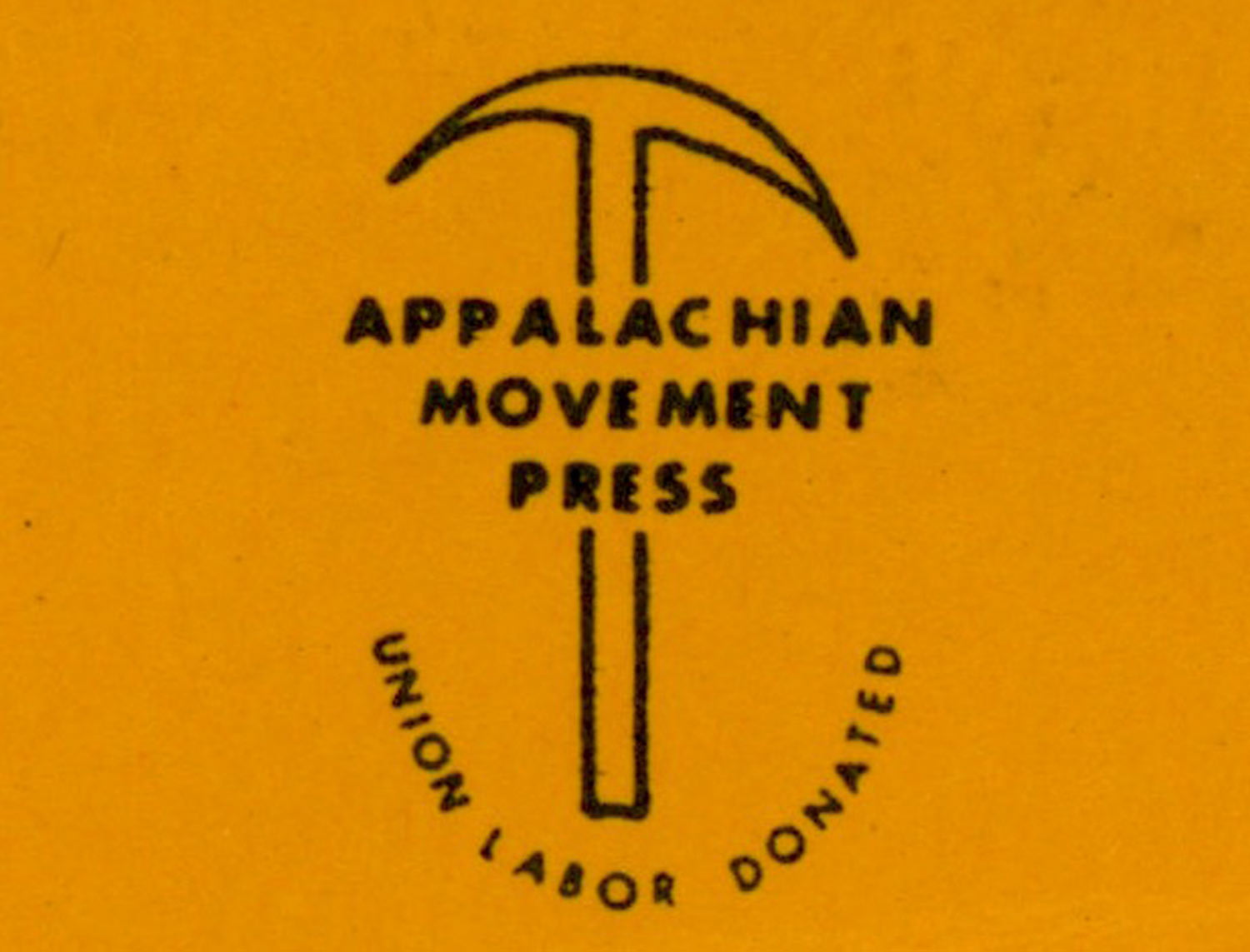
AMP colophon circa 1973
After two intense months of research, eventually I pieced the story together, and learned a few key points about what AMP was doing:
- They bought their first printing equipment with very little money during a key time of heavy transition in the town of Huntington, which coincided with the recognition, after a four-year battle, of a local chapter of Students for a Democratic Society (SDS) at Marshall University.
- Their alternative, grassroots publishing outfit didn’t produce a regular magazine or newspaper, but rather published works that explored Appalachian history and culture, re-published and amplified anti-corruption journalism from other sources, and acted as the primary self-publishing outfit for the regional organizer and poet Don West (in fact, I originally believed that AMP had been entirely West’s undertaking).
- Not exactly adhered to a particular political party platform, AMP was heavily influenced by two key ideological frames:
1.) a burgeoning “Appalachian identity” movement that was taking hold in the region broadly, and
2.) a growing focus on the concept of Appalachia as a “colony within a colony” (see: internal colony theory) as an abstraction for understanding how it “feels” to live in the region — particularly the Central, coal-rich areas like West Virginia and Eastern Kentucky. - Their primary mission was “getting correct and full information to all Appalachians”, as the foreward to one of their publications declares. “We had been through many years of education in our mountain schools and knew what a complete lack of any information on our culture and history and on our present day political and economic existence there was. We wanted to print pamphlets on famous Appalachians who are ignored in school books. We wanted to print pamphlets on our Appalachian heritage — on the fight against slavery by mountain people at the time of the Civil War, on the long struggle to gain a greater degree of freedom through organizing unions in the coal fields, and on the general spirit of independence and self-reliance of Appalachians throughout history. We wanted to print pamphlets about how today all our wealth is being taken from us — the wealth we produce, with our resources and our labor, that does not benefit us, but is added to the bank accounts of super-rich corporate owners in Philadelphia, New York and Pittsburgh.”
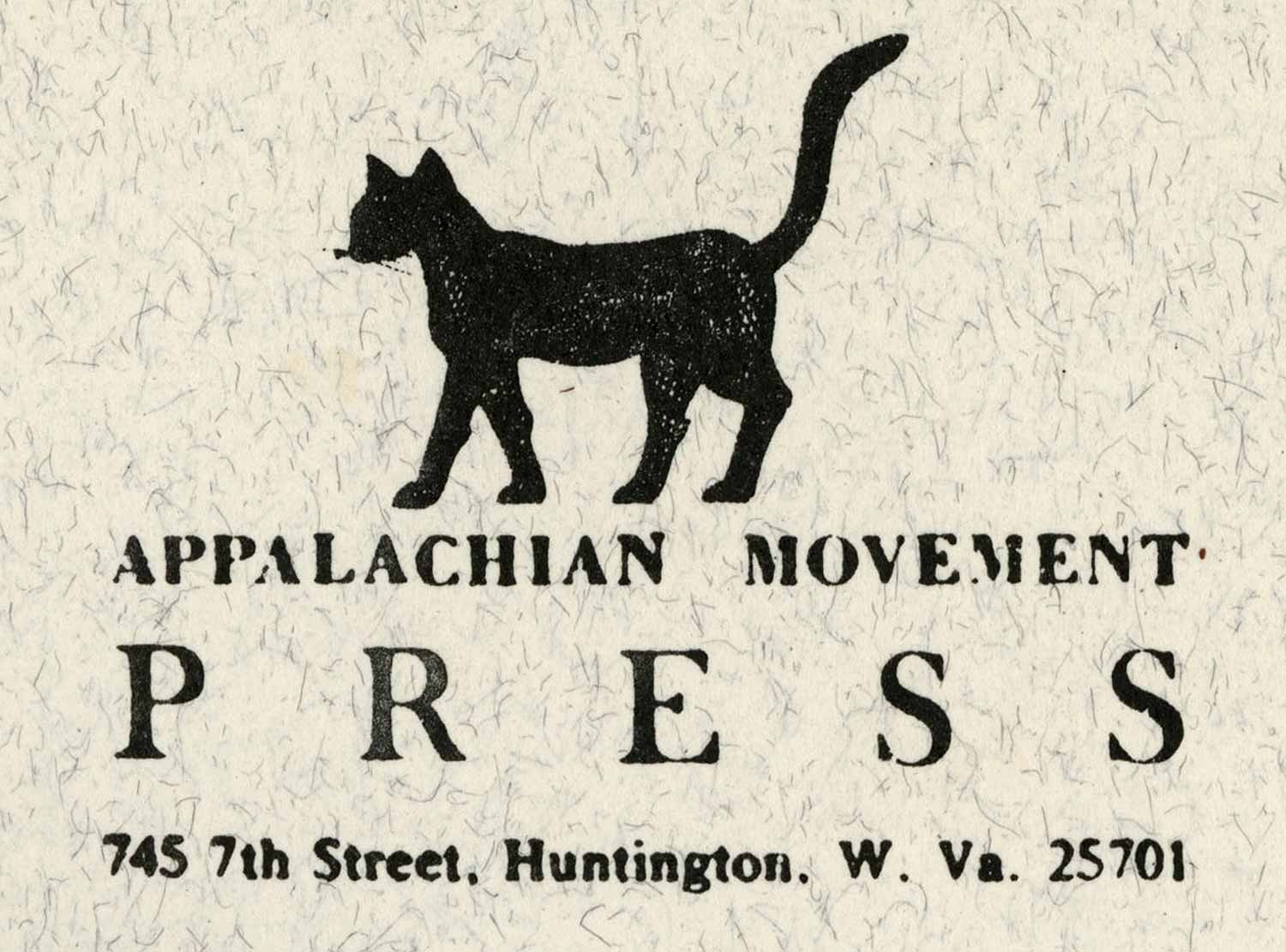
AMP colophon circa 1978
Of course there are many more details, much more context to the story. But the process of getting to the point of even knowing any of this information about AMP was its own journey, of a sort. Stepping away from the utterly monstrous first draft after I lobbed it into Icky and Josh’s laps a couple weeks ago, I did pat myself on the back for a quick minute, something I’m not prone to doing. Other than one or two brief mentions in two different biographies, it doesn’t appear that anyone has ever written a modern, detailed history of AMP.
I’m rarely asked to write. I want to say I jumped at the opportunity to write for Signal, because being invited was something of an honor. But I didn’t jump. I agreed, with a lot of trepidation. I then set about putting off making even a remotely productive move towards researching my subject for, I don’t know, six months? Maybe more. After all, I didn’t know one single fact about Appalachian Movement Press. I didn’t know where to even start.
Last summer, my partner Becca and I traveled to Pipestem, in southern West Virginia, for a wedding. At one point the groom, Sam, hollered me over to tell me that I really should read up on the guy who founded the place where the wedding was going on. He was talking about the Appalachian poet/activist/minister/educator/bad-ass Don West, and we were partying at the Appalachian South Folklife Center, a place West and his wife Connie had founded in 1965 “to educate young people about their mountain heritage and to focus on ‘the restoration of self-respect and human dignity lost as a consequence of the region’s colonial relationship with industrial America.’”
Inside the old communal dining hall, Sam pressed what I would call a “zine” into my hand. It was clearly from another era, slim, 8.5×11” folded and stapled. The cover was austere and striking: in simple sans-serif font, it read only “A Time For Anger – Don West”. Inside were poems, and on the back cover, a tiny, simple logo, or printer’s colophon, of a miner’s pick with the words “Appalachian Movement Press – Labor Donated” struck over the pick’s handle.

I flipped through the pamphlet, this zine, and shot a couple of pics on my phone. I texted a close-up of the AMP colophon to Josh and Icky: “hey look at this cool thing”. I posted the same pic on Instagram: “hey look at this cool thing”. Not much longer after that, Icky and Josh followed up. I should find out what the hell this “zine” was and dig into the story and write about it for Signal.
Most of what I learned about how to research and write wasn’t taught to me directly. I would say I’m self-taught, but I’m always suspicious of the concept of being truly self taught: unless someone is in total isolation from others, don’t we all, in some way, learn communally? As an adult, I mostly learned how to write from reading the work of others. I learned how to research from being in libraries as a kid, learning to poke through encyclopedias and indexes, paying attention to footnotes and sources (when I grew old enough to read books that did that), and asking questions.
All that is to say that I suffer from a bit of “imposter syndrome” when I write historical research. I don’t have a history degree, rather I have a drive to unearth and share histories that draws from somewhere between my frustration as a younger “activist” and my common human intrigue at unsolved mysteries. I sometimes feel like a spy when I enter an institutional archive. Or perhaps I’m a covert operative when I show up at a local historical society’s library and explain, with careful language, that I’m looking for evidence of, say, local Italian anarchist coal miners from around 1900. What if I’m discovered as an artist in disguise, and not a “real” historian?
Anyway, a truly thorough research project to unearth a previously barely-documented organization like Appalachian Movement Press would take years of digging through archives, finding hidden collections and gems, and doggedly pursuing original sources and participants. I compressed a majority of the work for this article into the months of April through June of 2017 while working part-time jobs. What I basically ended up doing in two month’s time was this:
- Relentlessly pursuing any human beings I could find who had anything to do with Appalachian Movement Press.
- Relentlessly pursuing any of Appalachian Movement Press’ actual publications I could put a hand to.
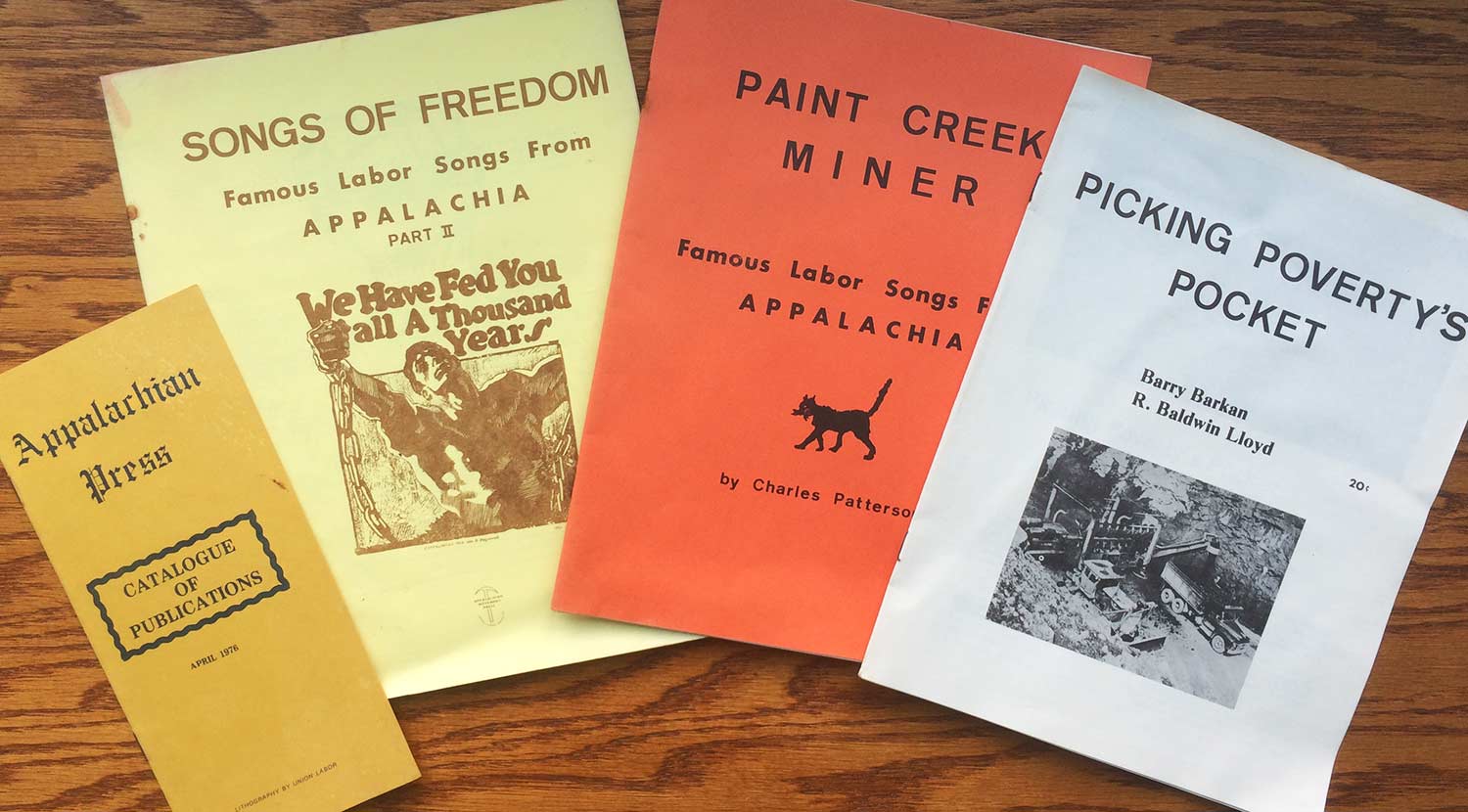
The first part of this “strategy” proved more difficult than expected. Ever cold-emailed a stranger in 2017 to ask them about something they did 40 years ago? It’s a crap shoot. Don’t get me wrong, in the past I’ve pursued research where I drove to people’s homes and knocked on their doors unbidden. But it doesn’t always work out well. And email, in the absence of follow-up phone numbers (or physical addresses) can be maddening: it’s hard to break ice with someone who tells you something promising and then drops the thread forever despite attempts to follow up. I sometimes thought that maybe folks figured I was just another journalist “discovering” Appalachia in this newest wave of dissonant Liberal journalistic intrigue from urban centers, the kind of person Don West had spent a lot of ink railing about in AMP pamphlets in the late 1970s.
Then I managed to get one interview through the generosity of documentary filmmaker Jon Averill, who drove to the marble quarry in Hinton, WV where John Strong Clark is known to spend his days. Clark printed with AMP from around 1977-79, but he doesn’t have a phone or email of his own, so Averill drove there (between taking his grandson to get a haircut and then taking him to the pool) so I could interview Clark on his phone. And then, this past week, after trying for nearly three months to find him, I was able to get Tom Woodruff on the phone. Tom was one of AMP’s founders, and his later career as a union organizer had taken him high up in the ranks of the SEIU, making his phone number a bit difficult to nail down. All of which is to say that my pursuits eventually paid off, even if my subjects were maybe a little confused as to why I cared so much to ask.
The second part proved easier, once I knew what I was looking for. Craig O’Hara from PM Press lives near me, in Frostburg, MD. Turns out he collects AMP publications, and he let me borrow the handful that he has. I visited the Regional History Center at West Virginia University in nearby Morgantown, and with help from Jessica Eichlin and others, I pored over what all they had around the shelves. And I went back down to the Appalachian South Folklife Center in Pipestem, to poke around with the support of their new director and a friend of mine, the photographer Roger May.
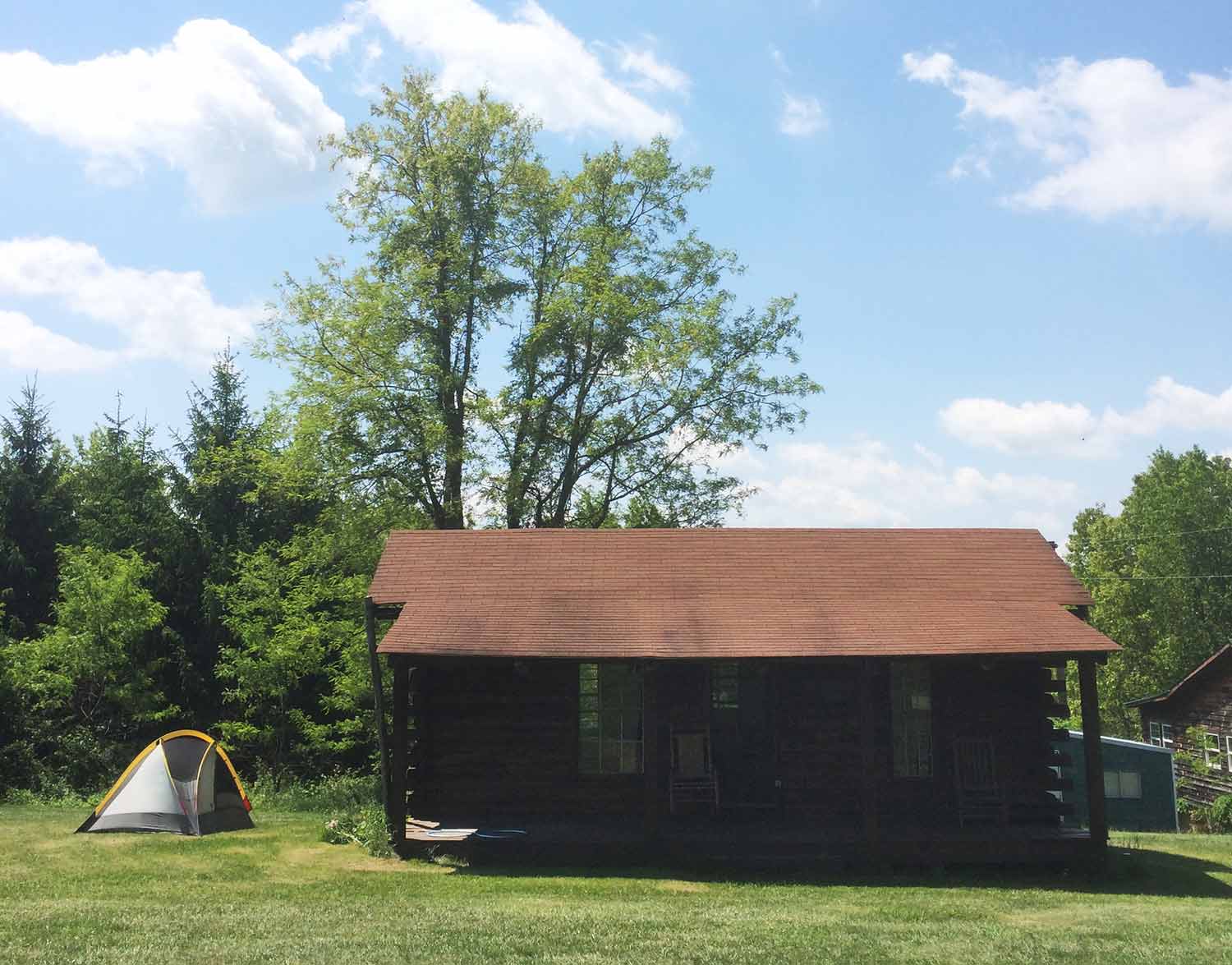
camped out next to the ASFC library
Near the end of my visit to the Folklife Center, I discovered loads of old AMP publications in storage in the basement of the chapel on the Center’s acreage. Unfortunately, it looked like most of it had been completely forgotten. The basement was moldy, and all of the AMP booklets were in haphazard stacks in milkcrates and Tupperware bins. It almost looked like it had been in the same spot since the press had folded in 1979 and the equipment had been moved to ASFC for a brief life as Mountain Freedom Press.
I did what I could to dig through the stacks and find the least damaged copies I could — some of them were publications I’d never seen before! Roger agreed without hesitation to donate one of everything I found to the Interference Archive, and at some point I’d like to head back down and finish the job of rescuing and sorting what remains. Suffice it to say that, if you’re publishing things on paper right now: Archive Your Work! You never know when someone decades later is going to care about what you were doing, and have a hell of a time trying to find out about it. Don’t leave it in a moldy basement!
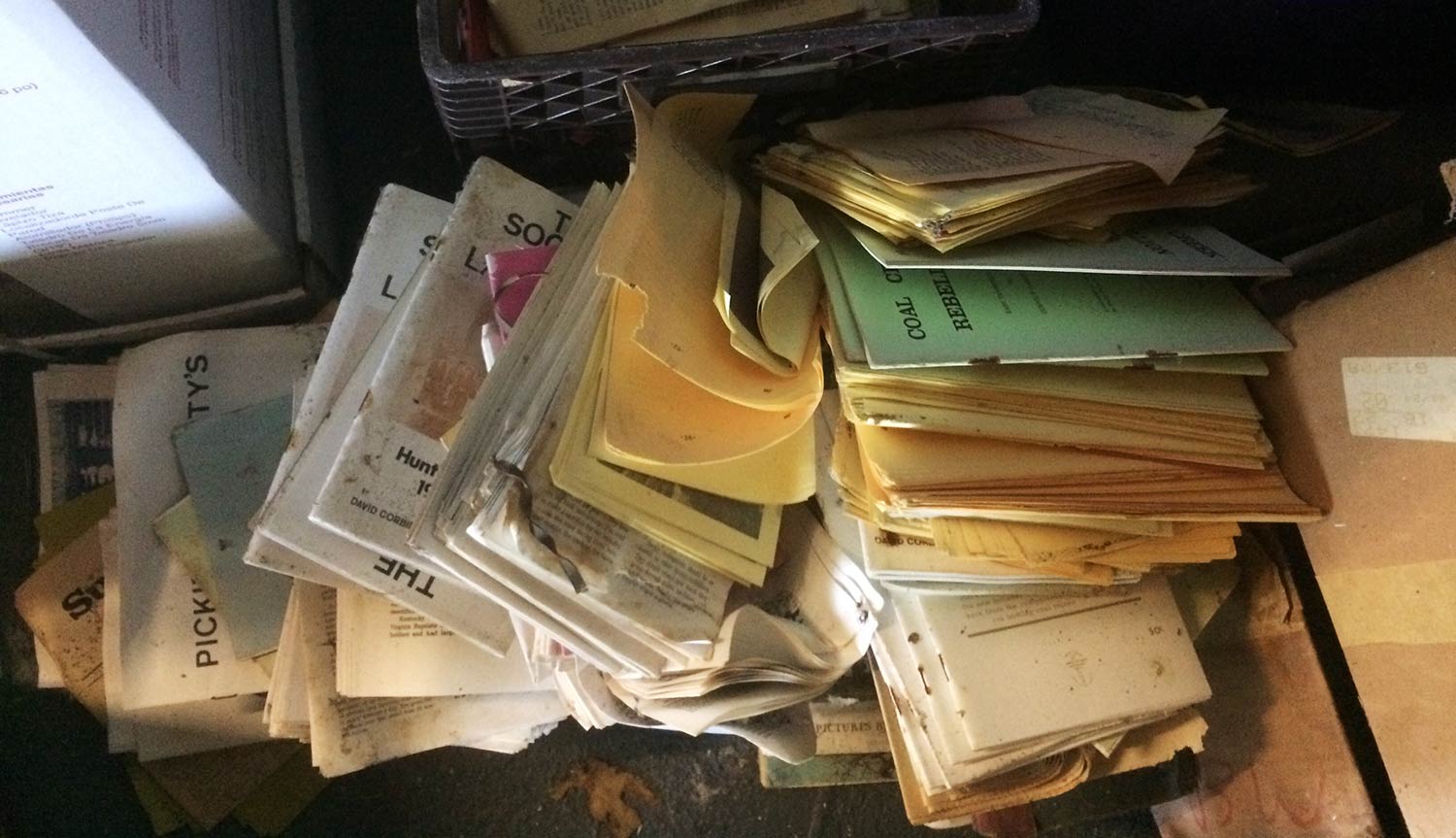
selection from chapel basement storage, Appalachian South Folklife Center
So, I scanned every publication I had. I read almost all of them, and I wrote summaries of each. With no prior framework to start from, a picture began to develop about what Appalachian Movement Press had been up to. I wrote it all down, everything, and then served it up to the editorial guillotine…
I have a hankering for untold stories, and it’s no mystery to a lot of folks that the American Southeast, including Appalachia, is an often maligned place in popular media. I hate the negative narratives and stereotypes about Appalachia and the South. I wasn’t born and bred there but I did live in Tennessee for a decade, and Pittsburgh itself is an Appalachian urban center. If I can find a way to buck the uninformed narratives about the broad, diverse, exciting history of this whole divergent area of the US, I’ll do it.
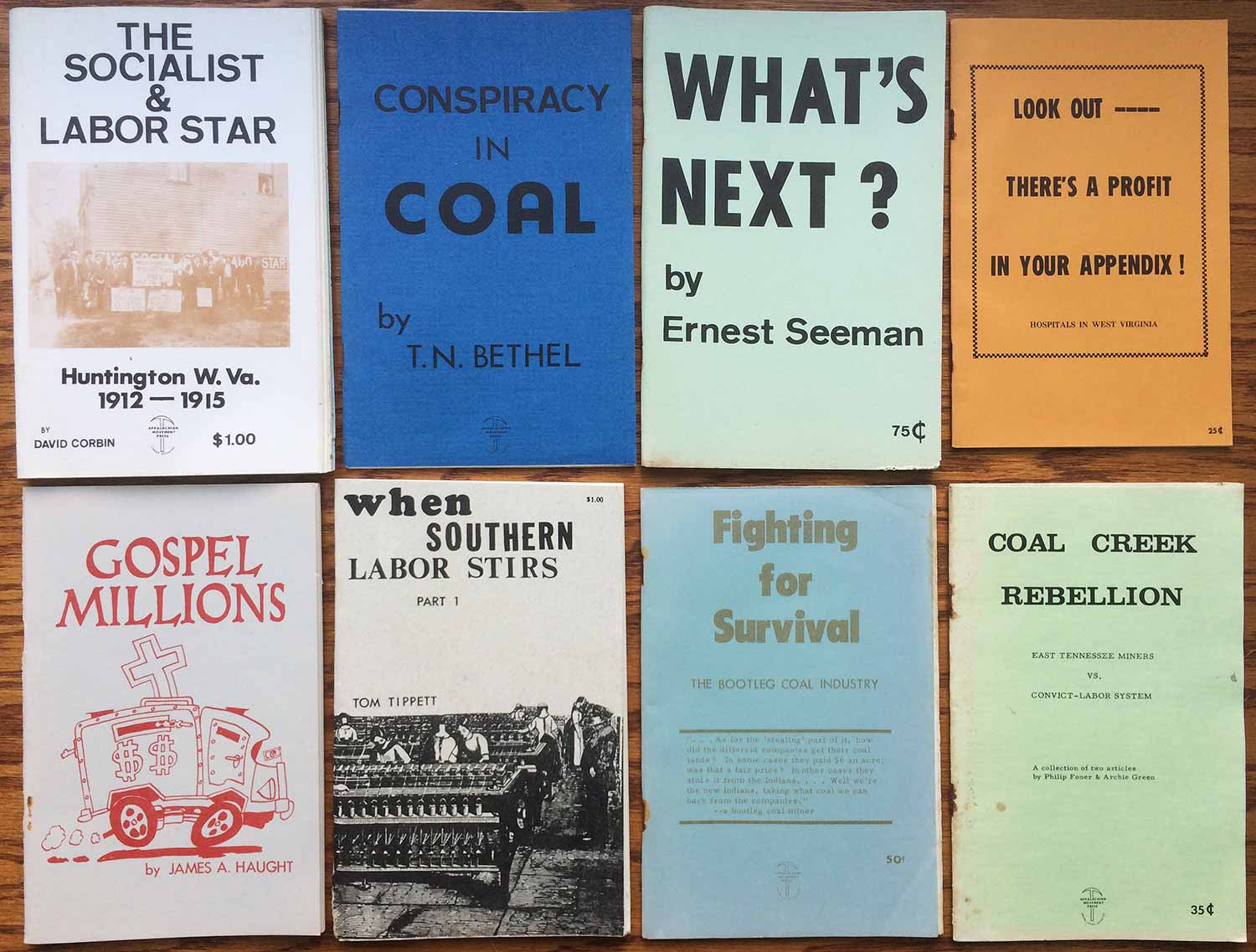
I guess I figure there’s plenty of cool stories about radicals in Chicago, New York, or the Bay Area. Let’s dig up and shine more light on the radicals that came from the hills, the mountains, the hollers, the deltas, the swamps, the cities that aren’t popular to visit, and everywhere in between. Do the work, and then share it.
Hopefully you’ll want to read the article when it comes out! It has a lot more detail about the historical context AMP was operating in, Don West’s role, and more details about what this small activist press in West Virginia was up to (including a couple of children’s books!). Do you know details about Appalachian Movement Press? I’d love to hear from you! Shoot me an email, shaun (at) justseeds.org
We’ll be carrying the new issue of Signal here on Justseeds as soon as it’s ready this fall. And I recommend picking up the previous issues now, because it’s an awesome publication and a total labor of Josh and Icky’s love. We’ve got the first five right at the bottom of this page.

poster by John Strong Clark, circa 1978
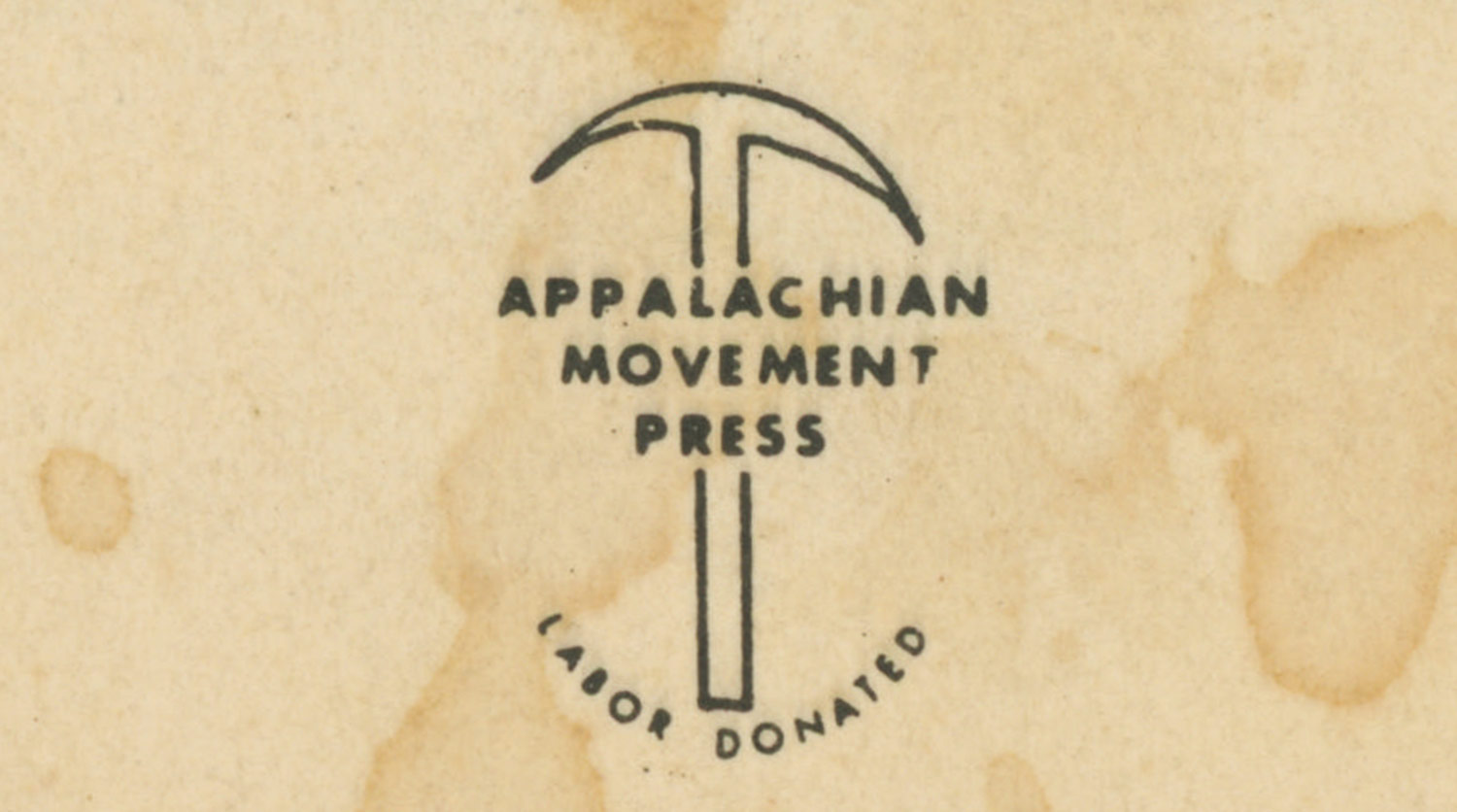
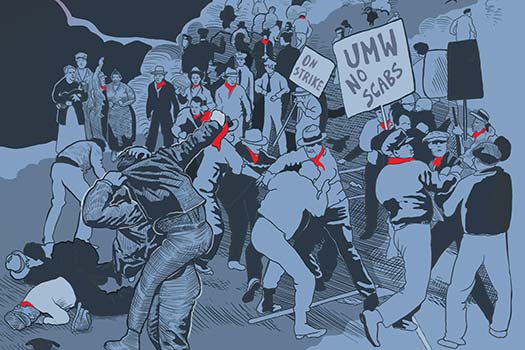
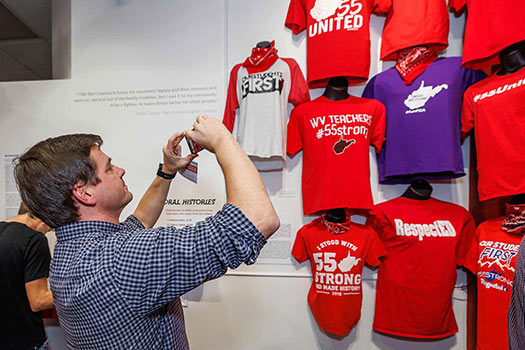


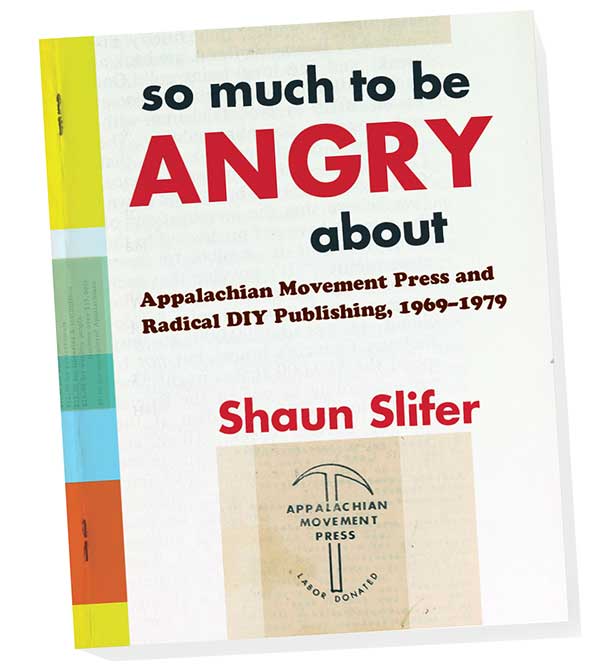
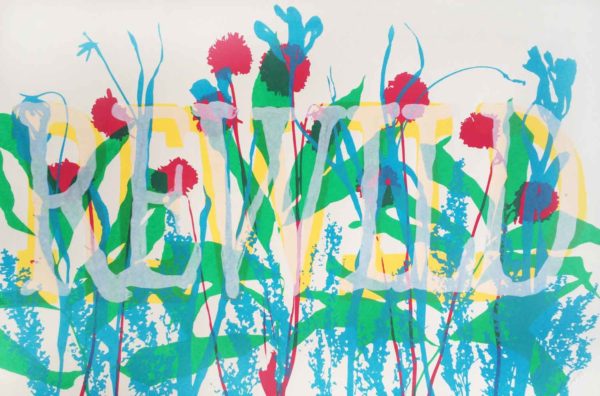

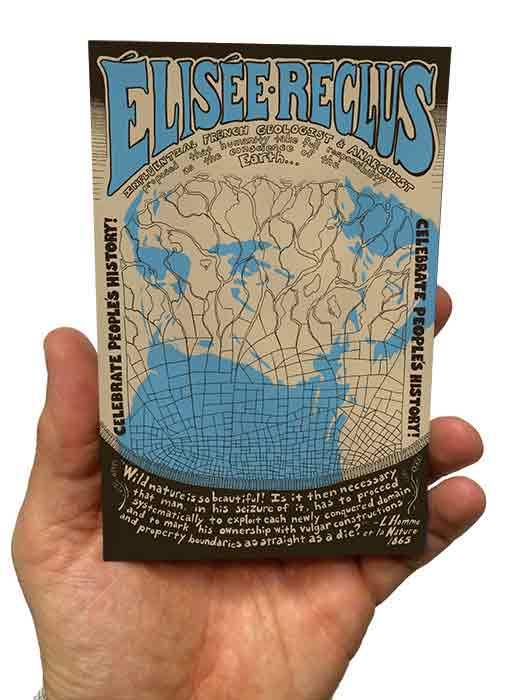
[…] a different sort of closet archeology, the blog 1970s Activist Publishing in West Virginia: Researching Appalachian Movement Press detailed the author’s journey to uncover the story of a small press that operated between […]
Can’t wait to get the final article into print and into the world! So much good history and cool knowledge and printing.
[…] Colophon for Appalachian Movement Press, 1973, from Shaun Slifer, 1970s Activist Publishing in West Virginia. […]
Some information you might not have about Appalachian Movement Press.
Danie Stewart, Tom Woodruff and I were the ones who pulled the press together. Tom, me and Amos Perrine supported the beginnings by renting the upstairs rooms. Danie and I had been active as students in the civil rights movement and I started a publication, Free Forum, which led to the SDS chapter there. When Tom found a cheap press from a local printer I fundraised to get the money. The owner of Blenko Glass flew into town to give me a thousand dollar check and a VP of OCAW gave us much of the remainder.
In my fundraising travels I solicited the Earnest Seaman pamphlet. One of our products was Il Manifesto, which I helped translate.
Don West was not involves with the press while I was there, although he was a teacher at the Antioch branch while I taught there.
Thanks Errol, this is super interesting! I’ve recently been looking at a couple of issues of Free Forum that the Marshall library has. I’ll follow up with an email soon!
Hi, Errol! I am interested in talking to you about the Free Forum as I am working on a project about the underground newspapers at Marshall. I am working with Special Collections on perhaps digitizing the issues we have, so they are accessible online. If this seems of interest, please let me know!
Was Rick Deihl or Diehl ever a writer for
AMP?
I’m not 100% sure, but my sense is that he wasn’t directly involved in AMP. But the group that Diehl worked with in Morgantown, People’s Appalachian Research Collective (PARC), did publish many of their earlier issues of their journal People’s Appalachia in Huntington with AMP.